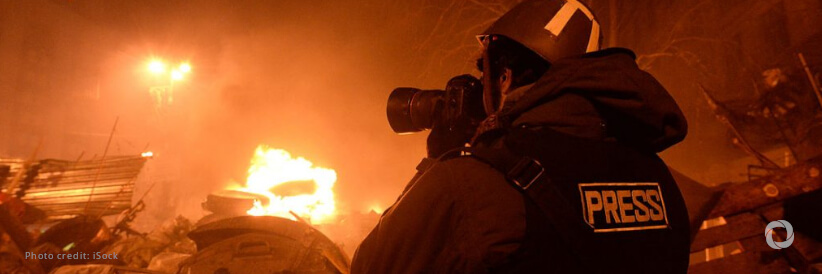UNESCO reports that at least 68 journalists and media workers have been killed in the line of duty so far in 2024. More than 60% of the killings took place in countries in conflict, the highest percentage in more than ten years.
”Reliable information is vital in conflict situations to help affected populations and to enlighten the world. It is unacceptable that journalists pay with their lives for this work. I call on all States to step up and ensure the protection of media workers, under international law,” UNESCO Director-General, Audrey Azoulay.
Of the 42 journalist killings in countries in conflict, 18 took place in Palestine, 4 in Ukraine and Colombia, 3 each in Iraq, Lebanon, Myanmar, and Sudan, and 1 each in Syria, Chad, Somalia, and the Democratic Republic of Congo. This continues an alarming trend established in 2023 – taken together, more journalists have died in conflict in the last two-year period than any since 2016/2017.
Overall, the killings of journalists and media workers (68) decreased compared to 2023 (74) and 2022 (88), although several cases are still being verified by UNESCO, in line with its working method. The decrease was notably driven by a drop in the number of journalists killed outside of countries in conflict, with 26 deaths. This was the lowest total in sixteen years.
It suggests that progress may have been made in some non-conflict countries in fighting attacks against journalists for their reporting in peacetime, which peaked in 2022 with sixty killings. This was especially the case in Latin America and the Caribbean, with 12 killings in 2024 compared with 18 in 2023 and 43 in 2022.
Beyond numbers
UNESCO’s figures are based on the cases recorded by leading international press freedom organizations. They do not include journalists dying in circumstances believed to be unrelated to their profession. However, UNESCO is continuing to monitor dozens of journalist deaths worldwide until confirmation is provided.
The process is followed in accordance with UNESCO’s mandate and established working method, which dates back almost 20 years. It ensures strict neutrality and impartiality while maintaining a consistent global approach. More information on this working method can be found in the UNESCO Observatory of Killed Journalists.
UNESCO’s efforts to protect journalists
UNESCO has the United Nations mandate to support freedom of expression and the protection of journalists. The Organization coordinates the UN Plan of Action on the Safety of Journalists and the Issue of Impunity. It systematically condemns and monitors judicial follow up to every journalist’s killing. UNESCO also trains journalists, judicial actors, and security forces, works with governments to develop supportive policies and laws, and raises global awareness through events such as the International Day to End Impunity for Crimes Against Journalists (2 November) and World Press Freedom Day (3 May).
UNESCO also documents and analyzes the different forms of threats against journalists. Earlier this year, the Organization warned against the rise of new forms of censorship, such as the misuse of financial laws to silence journalists. A UNESCO report released in May revealed a 42% rise in attacks against journalists reporting on the environment between the periods 2014-2018 and 2019-2024.

